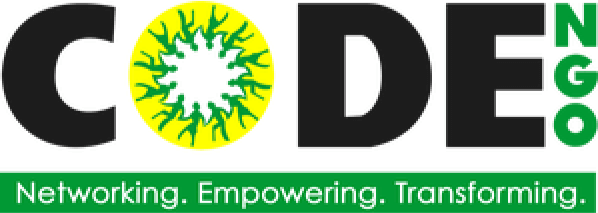
Luz Almazan, Education Consultant (Left) and daughter Victoria Almazan, Team Lead (Right) of Museo Bayanihan at the kickoff meeting with the Center for Humanitarian Learning and Innovation last April 26, 2019 (Manila Center Office, Philippines).
The practice of storytelling is embedded in the Filipino culture. In important events and experiences, such as disasters, stories serve a powerful purpose of empowering and educating people. This is the belief of the women from Guiuan, Eastern Samar who founded Museo Bayanihan after being hit by Typhoon Haiyan in 2013.
Museo Bayanihan is a collaborative digital resource for students and communities to access stories from survivors and educational materials made by teachers. It is one of the 40 innovative projects on disaster preparedness that is supported by Philippines TUKLAS Innovation Labs which seeks community-centered projects on disaster risk reduction and management.
In April 2019, the Center for Humanitarian Learning and Innovation partnered with Museo Bayanihan to upload the stories as a course on KAYA, the Center’s online learning platform. Each storybook will contain pictures, videos, and other supplementary materials to enhance the learner’s understanding of the perspectives of the storytellers.
In the storybooks, various members of the community relive where they were and what they were doing at the time when tropical cyclone Haiyan (local name: Yolanda) made landfall in the Philippines. The storytellers include a public school teacher, parish worker, senior citizen, and fisherfolk, among others. Their hope is to make readers understand that a disaster situation is outside a person’s everyday experience, and that what happens in real life often exceeds what is perceived. 
 The course that will be developed by the Center shall focus on empowering the survivors of Typhoon Yolanda through transformative storytelling approaches. In addition to the “Kwentuhan” (storytelling) course which is targeted to a wider audience, the Center will develop two additional courses designed for public school teachers.
The course that will be developed by the Center shall focus on empowering the survivors of Typhoon Yolanda through transformative storytelling approaches. In addition to the “Kwentuhan” (storytelling) course which is targeted to a wider audience, the Center will develop two additional courses designed for public school teachers.
The first course is designed to help public school teachers create lesson plans that integrate disaster education in their specific subject areas. These are Values Education, MAPEH (Music, Arts, physical Education, and Health), HUMSS (Humanities and Social Sciences), and ALS (Alternative Learning System). For example, teachers can discuss the concept of the Filipino “bayanihan”, or solidarity-based values that should be practiced in times of disasters.
The second course showcases the use of creative learning sessions for students in preparation for a student-led exhibit on disaster preparedness and resiliency. Students are envisioned to serve as museum guides and facilitators of the exhibit which will be open to children, parents, local officials and the wider community.
KAYA currently offers a course entitled BLAST DRRM: Introduction to Community Based Disaster Risk Reduction and Management. With the partnership between the Center and Museo Bayanihan underway, the public can expect and access more content via KAYA on community-based survival, resilience, and disaster preparedness.
For more information on CHLI, email: chli@code-ngo.org


You must be logged in to post a comment.